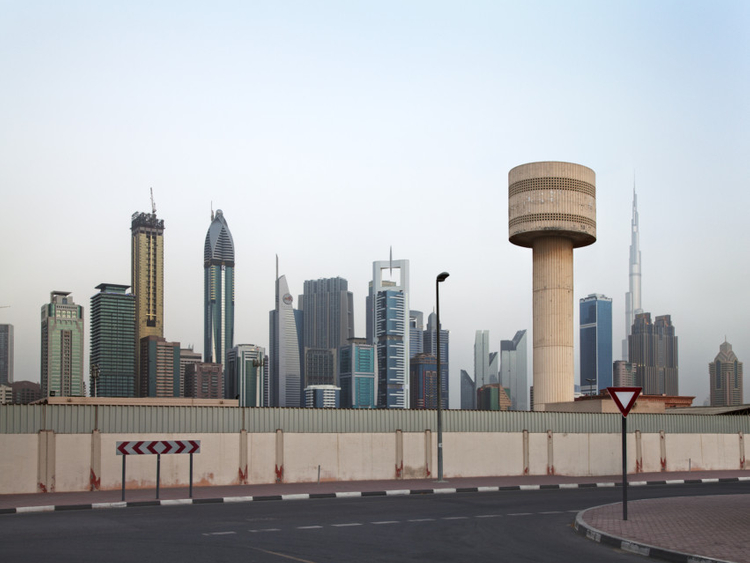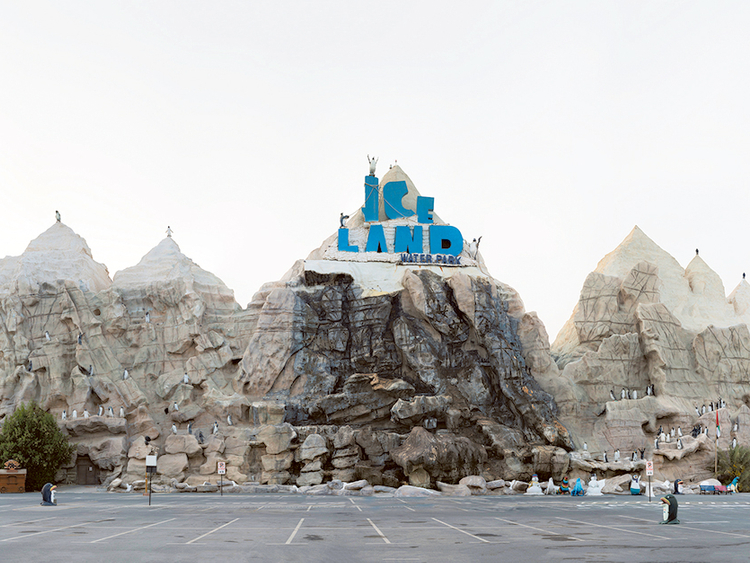
German photographer Tor Seidel has been fascinated with Dubai since his first visit in 2008. He became a regular visitor to the city, until eventually moving here in 2013. During this period, he has documented the rapidly changing landscape of the city, and in 2014 he published a book of his photographs titled “The Dubai”. Seidel is exhibiting a selection of photographs from the book for the first time in an exhibition titled “Just a Look”, at XVA gallery.
Seidel’s photographs capture the spirit and energy of a city that dreams big, and has realised those dreams. They convey the magic and mystique of a cityscape dotted with avant-garde architecture, but they also speak about the desert environment from which the city has emerged, and the challenges it has faced along the way.
The artist has photographed well-known Dubai landmarks such as the Burj Al Arab, the Burj Khalifa and Dubai Mall from refreshing new perspectives; but other interesting architectural projects such as exotic private homes that reflect the city’s multicultural ethos, and quirky projects on the manmade islands off Dubai’s coast have also caught his eye. His images eloquently tell the story of Dubai’s unbelievable growth and transformation in a short span of time, and the lifestyle it offers to residents. The artist is also displaying new images from his next book project.
Seidel spoke to Weekend Review about his fascination for Dubai and the concept behind his photographs. Excerpts:
How did you get so interested in Dubai?
I had never even heard of Dubai until I flew to Abu Dhabi in 2008 for a commission to document the reconstruction of a heritage fort in Al Ain. During this trip, my friend — architect Dominic Wanders — suggested that I should drive down to Dubai, and arranged an architectural tour of the city for me. I was extremely impressed by what I saw and amazed to hear the story of Dubai. I loved the energy and attitude of Dubai, and kept coming back every year to take pictures of the incredible buildings that were coming up, the numerous construction sites and the massive billboards advertising ambitious real estate projects across the city. Many of these pictures appeared in leading German publications and were shown in exhibitions.
What motivated you to do a book about Dubai?
Coming from East Germany, which has an old history and where things happen slowly, I just could not understand how a city such as this could have come up in just three decades. I was amazed at the idea of building artificial islands such as the Palm Jumeirah and The World. Also, after seeing the conflicts caused by immigration in Europe, I was very impressed by the clear and well-developed systems here, which ensure that people of so many different nationalities and cultures can live together in harmony. Dubai has shown me that it is possible for human beings to achieve seemingly impossible dreams in an unbelievably short time, and to build a peaceful multicultural society. I felt I just had to do a book about it.
What was your concept for the book?
I did not want to show beautiful postcard type pictures; I wanted to look beyond the surface and understand how Dubai achieved all this. I took pictures of old buildings and homes that were being demolished to make way for new projects, and found vantage points on the new towers on Shaikh Zayed Road to shoot the new flyovers, skyscrapers and vistas being created. I also tried to take pictures that contrasted views of the sandy, open terrain, palm and ghaf trees, and low-rise structures of old Dubai with the emerging skyline of new Dubai. But after I decided to do the book in 2010, the global economic crisis happened. I found myself photographing unfinished buildings, abandoned construction sites, vacant artificial islands and huge, empty billboards. My publisher Hatje Cantz was keen to release the book in 2013, but I insisted on waiting because I was interested to see how Dubai would respond to the crisis. I moved to Dubai in 2013 for the main purpose of documenting the city’s recovery. This is the last chapter in my book, which traces the changing landscape of Dubai through the boom period, the slump and the remarkable revival, from my personal perspective.
Why did you put “The” in the title?
I believe that there must be a plan and strategy devised collectively by smart and intelligent people working together to achieve what Dubai has. This is reflected in my composite photograph of a model of Dubailand in the book, which is the largest model I have ever seen. My title, “The Dubai”, implies this idea of “the project”, and emphasises it, while also echoing the naming of iconic Dubai projects such as “The World”.
Why are there no people in most of these photographs?
Firstly, because my book is not about street photography, but about capturing the cityscape and the urban environment. Secondly, I wanted to respect the local culture and rules, so I tried to shoot at times when not many people were around, and edited people out of the images taken in public spaces. But I have also staged some pictures where I felt that having a person in the frame would help the narrative.
In the staged pictures, why do the people always have their backs to the camera?
I am a great fan of famous German artist Caspar David Friedrich, whose metaphysical landscape paintings featured silhouetted figures contemplating the view. In my photographs the tiny human figures looking out at the expansive, almost surreal cityscape of tall skyscrapers tell stories about the scale of the city, the aspirational lifestyle it offers, and the ambition that drives this city. Like these people in my photographs, I have often sat alone contemplating Dubai’s cityscape with wonderment and disbelief. I want to invite viewers to put themselves in the place of these figures and experience the environment from that perspective.
Why did you use the geographical coordinates of the structures and places in your photographs as their titles in the book?
As a sailing enthusiast I am used to working with these coordinates. When I started visiting Dubai there were few street names and numbers, and giving directions to friends or taxi drivers was very difficult, and I was always using Google Maps to find my way around. With these titles, even those who do not know where Dubai is will be easily able to locate the city and the places in my photographs.
What is your next project?
I am working on a book on the UAE with photographs from all the seven Emirates, some of which are presented in this show.
Jyoti Kalsi is an arts-enthusiast based in Dubai.
“Just a Look” will run at XVA gallery in the Al Fahidi Historical Neighbourhood until October 4.












